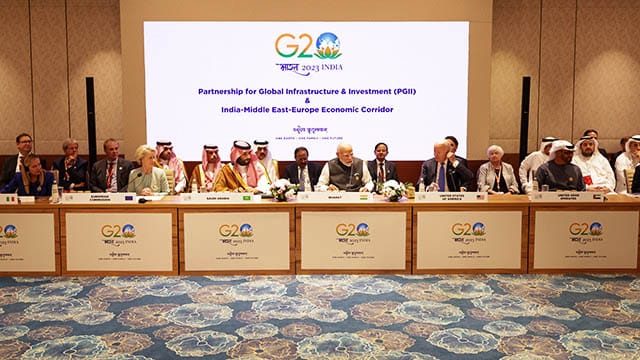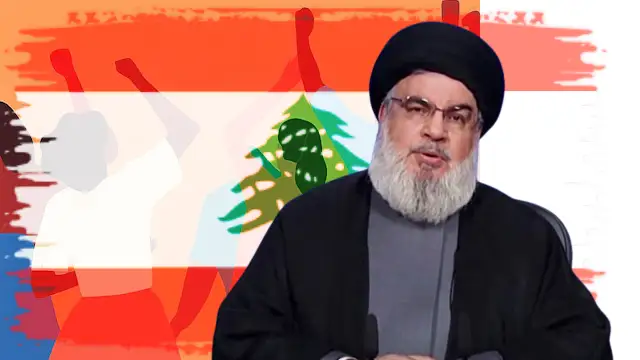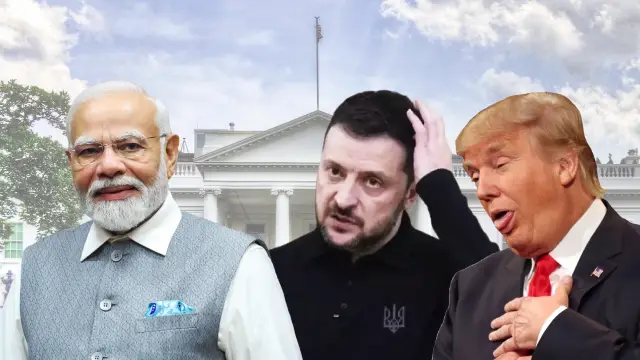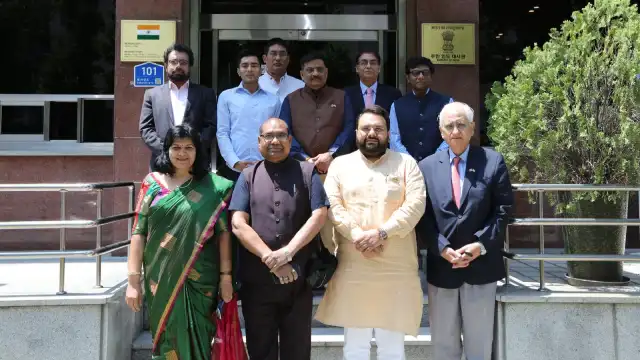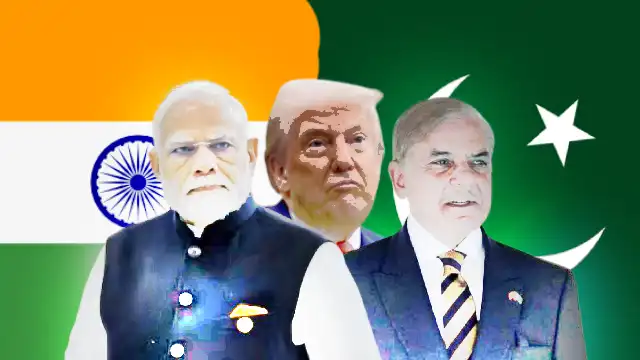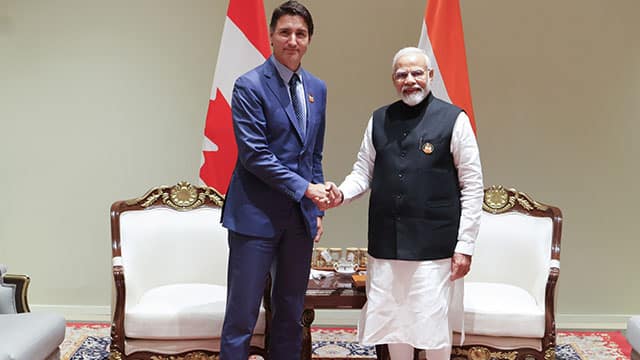The India – Middle East – Europe Economic Corridor (IMEC) —discussed by multiple stakeholder countries during the sidelines of the recently concluded G20 Summit in New Delhi—is considered an antidote to China’s ambitious Belt-Road Initiative (BRI) by Indian geopolitical experts but not by the Russians or the Chinese.
Russians have mixed reactions to the IMEC proposal. While President Vladimir Putin considered it beneficial, a Russian economist opined that the project won’t act as a competitor to the BRI but supplement it by building roads, railways and relevant infrastructures in India, the Middle East and Europe.
Unlike the Russians, the Chinese are extracting cryptic messages from between the lines and considering it as another futile attempt by the US to coax the Middle Eastern countries to join its bandwagon against Chinese BRI in the region. However, the Chinese have expressed no threat from the development but raised doubts on its viability.
The Indian side has been showing interest in the project apparently due to the US’s involvement in it. India has been strengthening its ties with the US to contain China’s growing global influence. However, the big question is whether the IMEP will be beneficial for India’s trade and commerce or whether it will end up benefiting a particular conglomerate perceived as close to the current dispensation.
Putin considered IMEC beneficial for Russia
Contrary to the West’s expectations, Putin didn’t lambast the project but called it one that will benefit Russia. Speaking at the plenary session of the Eastern Economic Forum (EEF) on Tuesday, Putin said, “I believe this will only benefit us. I think this will only help us to develop logistics. Firstly, this project has been discussed for long, for as much as several years.”
Although he questioned the US’s “last moment” entry into the project, Putin ruled out any scope of it posing a threat to the interests of Russia. “Truly, the US jumped into this train at the last moment. I do not see much sense for them to be in this project. Probably, only from the standpoint of business interests”, he added.
Considering the project as a supplement to Russia’s ambitious North-South project, Putin dismissed any scope of the IMEC’s interference with Russia’s trade interests. “Meanwhile, the extra freight traffic along this route essentially supplements our North-South project. We do not see anything there that can somehow interfere with us”, the president said.
One of the reasons behind Putin’s comfortability with the IMEC is the presence of India, Saudi Arabia and the UAE in the project. While Russia has strong ties with India, its bilateral relations with the Gulf kingdoms have been improving lately, especially after the special military operations in Ukraine started.
IMEC to supplement BRI
Andrei Ostrovskii, the chief researcher of the Institute of Oriental Studies of the Russian Academy of Sciences and a professor at the Moscow State Pedagogical University, opined that, unlike the BRI, the IMEC project has been recently mooted and it isn’t clear who would fund the ambitious project.
Ostrovskii, who was speaking at an online event hosted by Sputnik India on the outcomes of the G20 Summit, claimed that while China’s BRI has been there for over ten years and has known sources of finance, especially from the Asian Infrastructure and Investment Bank (AIIB), no such details are yet available for the IMEC.
“Building transport infrastructure costs a lot of money. Who will pay for it (IMEC)? Saudi Arabia and India have some funds and they may be able to invest, but for Jordan and Egypt, I don’t know whether these countries have the money to contribute. So who will pay remains unclear”, Ostrovskii said.
Although Ostrovskii considered the IMEC as something similar to Chinese President Xi Jinping’s ambitious BRI project, he didn’t consider it a competitor but said it could only supplement the BRI. “Yes, it (IMEC) could be a supplement to the BRI. You can’t compare (the IMEC project) with the BRI because for the BRI we know the challenges, the countries involved and the finance sources”, Ostrovskii added.
“China has been there with the BRI for ten years now and countries that are involved have seen an increase in their international trade. So, today, international trade is more than 30% of China’s economy and they have been increasing this share of trade by 1% annually”, Ostrovskii highlighted.
What’s the IMEC project?
The IMEC project, which had its first stakeholders’ meeting under Indian Prime Minister Narendra Modi’s chairmanship on Saturday, September 9th, “comprises of an Eastern Corridor connecting India to the Gulf region and a Northern Corridor connecting the Gulf region to Europe. It will include a railway and ship-rail transit network and road transport routes”, according to the Indian Ministry of External Affairs (MEA).
According to initial plans, revealed at the event on Partnership for Global Infrastructure and Investment (PGII), cargo from Indian ports in the states of Gujarat and Maharashtra will be transported by maritime route to the UAE. From there the cargo will be reloaded on freight trains—for which railway infrastructure will be built—going up to the ports in Israel via Saudi Arabia and Jordan. From Israel, the cargo may directly reach the European Union (EU) through Italy or can be sent through Greece via Egypt.
Made with Visme
The IMEC project is expected to significantly reduce the time taken by Indian cargo to reach the EU. However, considering the ambitious nature of the project and its need for huge investments, it’s evident that the IMEC won’t be realised anytime soon.
The Memorandum of Understanding (MoU) of the IMEC, signed by the participating countries, doesn’t contain the details of the funding or the particular responsibilities of the countries. It has mentioned that the agreement is at an intention level and there are no international obligations for the parties. According to the MoU, the participants will meet within 60 days to decide on the project funding details and fix a timeline.
Apart from Modi, World Bank President Ajay Banga, Mauritius Prime Minister Pravind Jugnauth, Japanese Prime Minister Fumio Kishida, European Commission President Ursula von der Leyen, French President Emmanuel Macron, German Chancellor Olaf Scholz, Italian Prime Minister Giorgia Meloni, Saudi Arabian crown prince Mohammad bin Salman, the UAE’s President Mohammed bin Zayed Al Nahyan and the US President Joe Biden attended the PGII and IMEC event.
Chinese criticism of the IMEC project
Although the Chinese Foreign Ministry didn’t comment on the IMEC project revealed at the G20 Summit sidelines, a Chinese daily Global Times has criticised it, alleging “American influencer project aimed at coaxing relevant countries and countering the China-proposed Belt and Road Initiative”.
“The geopolitical underpinnings of the project could not be more obvious. The US is trying to squeeze China’s influence out of the Middle East and relevant regions by building large economic corridors as a counterweight to the BRI”, the Global Times alleged in an editorial.
“Not all grand US plans will have to be eventually implemented as planned, especially when the main function is to trick other countries into becoming pawns in the US efforts to counter the BRI”, the editorial added.
The Global Times also raised apprehensions about the funding of the project, which wasn’t discussed during the initial meeting on September 9th, asking “which country will pay for the multilateral infrastructure project that will probably cost tens of billions of dollars? Would Americans rather spend a fortune in the Middle East and India, or on improving their own outdated rail network where derailments have become increasingly frequent?”
The editorial also raised questions on the project’s viability citing the low trade volume between India and the EU. “What will the new rail line carry? Will there be enough trade to justify it? Take India. India is the EU’s 10th-largest trading partner, accounting for about 2 percent of the EU’s total merchandise trade. Moreover, there is convenient maritime transport among India, the Middle East and Europe. So it is highly questionable whether the region needs to build a rail network for the limited trade volume (sic)”, the editorial highlighted.
The Indian and the US administrations have been discussing the rail network plan with Saudi Arabia and the UAE to bring them out of Chinese influence for quite some time. However, both India and the US lag behind China in terms of railway infrastructure and advanced technology.
Thus, the Global Times asked the US to upgrade its railway system before venturing out in Asia. “The US government should focus on improving the country’s old rail systems that are in dire need of upgrades, rather than concocting plans to contain China”, it said.
“As for India, compared with the multinational rail plan full of uncertainty, maybe what matters most is how the country can modernize its domestic rail system so that it can play a more important role in its economic development domestically (sic)”, it added.
The Indian question
While the EU was India’s second-largest export market in 2021, where 14.9% of its total exports went, it’s not the case for countries like Saudi Arabia, foreign trade with the EU was 2.3% of its total external trade in 2020, the UAE, foreign trade with EU was 3.2% of its total external trade in 2021.
However, although whether the IMEC will be able to boost India’s trade with the EU isn’t clear at this point, it appears to be profitable for a conglomerate considered close to the Modi government.
The ports owned by or in the acquisition pipeline of the controversial Indian port-to-power conglomerate Adani Group may play a major role in the IMEC project. The Mundra and Hazira ports in Gujarat or the Dighi Port in Maharashtra can be among those from where the shipments will be sent to the UAE.
After the cargo reaches Israel, it can be sent to the EU from the Haifa Port, which the Adani Group is reportedly acquiring. Gautam Adani, the chairman of the conglomerate, has reportedly discussed the options of acquiring Greek ports during the prime minister’s visit to the country in August. The Adani Group is primarily focusing on the Kavala Port and secondarily the Volos Port of Greece.
The strategy apparently is to bypass the Piraeus Port, the largest one in Greece, which is owned and operated by a Chinese company named Cosco. In case either the Kavala or the Volos is acquired by Adani, then the shipments can avoid Piraeus Port. Alternatively, the shipment can reach the Italian state-owned Port of Trieste from Israel’s Haifa Port.
Whether the IMEC project is going to be beneficial for the Adani Group isn’t clear at the initial stage. However, if it does, then it can also stir a political storm over the government’s alleged nexus with the conglomerate, which has been alleged by the Opposition. Such an accusation can cause immense damage to India’s reputation during its pursuit of such an important international project.
The way India has bypassed Iran, its key ally, where New Delhi has invested in the construction of the Chabahar Port, it appears that the entire project is designed to serve the US geopolitical interests in the Middle East. It’s going to help Washington DC to ensure it retains control over the key Gulf monarchies and tie them up with India and Israel, its two key allies.
Although there are apprehensions about the IMEC project and its economic viability, all eyes will now be on the next meeting of the stakeholders, where the important issues, including funding, timeline, etc, will be discussed. It’s to be seen how much each of these stakeholders, especially Egypt and Jordan, are going to invest in the project and which international financial institutions provide them with the required credit.
Tanmoy Ibrahim is a journalist who writes extensively on geopolitics and political economy. During his two-decade-long career, he has written extensively on the economic aspects behind the rise of the ultra-right forces and communalism in India. A life-long student of the dynamic praxis of geopolitics, he emphasises the need for a multipolar world with multilateral ties for a peaceful future for all.

